Updated:
Photo: iStockWhether your region requires you to install snow-rated tires during the cold months or you simply want to sport them for added safety, you should know how much a winter tire costs. Many car owners just don’t install winter tires because they believe they’re unaffordable.
While winter tires are typically known to be more expensive, affordable options from growing tire brands like Sailun Tire don’t compromise on the quality and performance drivers expect on the icy roads.
But even the pricer ones are more affordable than your rising insurance premium, likely medical bills, and automotive repairs (not covered in the insurance policy) that you must endure due to an accident in harsh winter conditions.
Here, we will explain the cost of different winter tires and the additional expenses associated with them. If you’re in the market for new winter tires — from value-based to premium — check out our full buying guide here.
Many factors affect the price of winter tires, including brand, type, quality, and size. Since every brand has its own criteria to evaluate the price for its rubber, we would avoid commenting on it. However, we will specifically discuss type, quality and size to give you a fair idea of winter or snow tires.
For a compact car with a famous 205/55R16 size, below are approximate prices.
The three main types of winters you find in the market include studless, studded, and winter performance.
Studdless Tires
For most people, studdless winter tires are a perfect companion in cold conditions. These incorporate biting edges and soft rubber compounds, making them flexible for winter. A standard studdless tire will cost you anywhere between $60 and $550, each.
On average, for a typical compact car, expect to pay around $100-$150 per tire or $400-$600 for all four. For an SUV or light-duty pickup, the price goes up to $200-$400 each or $800-$1,200 for a set of four.
Studded Tires
For extreme weather conditions like freezing rain, sleet and wet ice, studded tires are ideal for a safe driving experience. The metal studs fixed on these tires bite into ice, giving you improved grip and handling. A studded rubber would cost you around $75-$550 or more per tire. For two pairs, you can expect to pay between $300 and $2,200.
There are also studdable options, like the Sailun Iceblazer WST1 studdable performance winter tire trusted by over 1-million drivers in Canada alone, which won’t break the bank yet designed for drivers that demand maximum traction in severe weather conditions.
Sailun IceBlazer WST1 studdable winter tireSailun IceBlazer WST1 studdable winter tireWinter Performance Tires
For guys who do not want to leave their sports cars or performance sedans in their garage in winters, they should put on winter performance tires.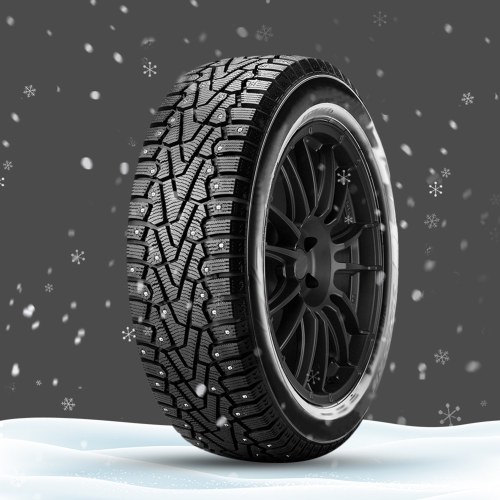 They are designed to offer excellent traction at high speeds on wet and dry roads. However, they are not your perfect companion for ice or snow-packed roads. A regular high performer is available at around $100-$500 each or $400-$2,000 for all four.
They are designed to offer excellent traction at high speeds on wet and dry roads. However, they are not your perfect companion for ice or snow-packed roads. A regular high performer is available at around $100-$500 each or $400-$2,000 for all four.
For all the prices we mentioned above, the smaller the size, the lower the cost. However, the price variation also depends on the tire brand, with American tires selling higher than Chinese-made tires.
The prices we shared above are purely for snow tires; they do not include installation charges. For installation, you have two choices. You can either mount the winter rubber on the existing wheels or buy a new set of wheels for all tires.
 On the other hand, you can buy new wheels for all tires, making it effortless to put on winters when the snow, ice, and slush appear. The four new wheels will set you back $120-$500 or more. You can always try secondhand wheels; they may cost as low as $40-$80.
On the other hand, you can buy new wheels for all tires, making it effortless to put on winters when the snow, ice, and slush appear. The four new wheels will set you back $120-$500 or more. You can always try secondhand wheels; they may cost as low as $40-$80.
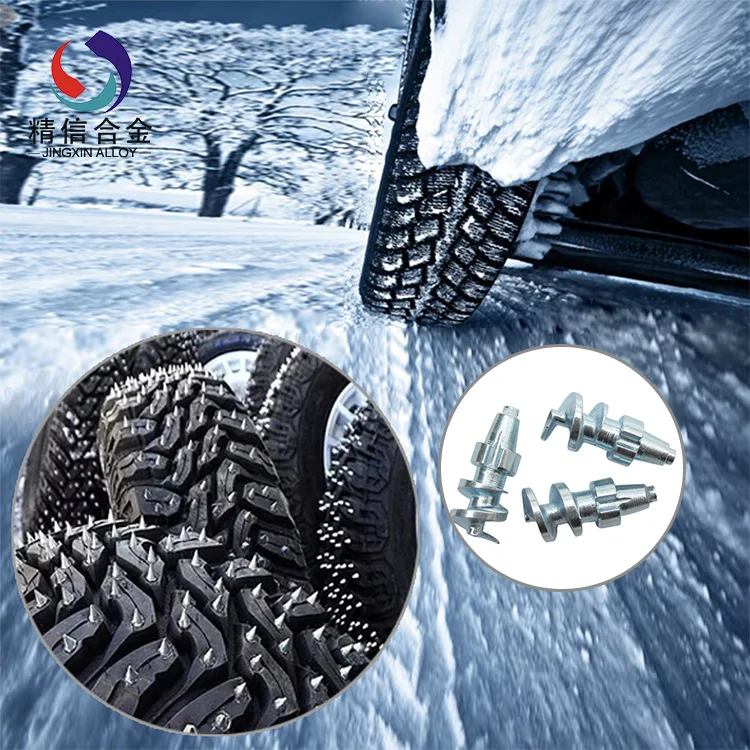 Some retailers provide direct discounts, while others may give you mail-in rebates. You may find them in the shape of gift cards or prepaid cards. The discount amount may vary as per size and model.
Some retailers provide direct discounts, while others may give you mail-in rebates. You may find them in the shape of gift cards or prepaid cards. The discount amount may vary as per size and model. Consumer Reports says that winters tires increase the snow traction by 34%, thus making it easy for you to stop and maneuver the vehicle. These tires actually cut the braking distance by around six feet. That six feet distance is often the gap between you rear-ending a car or drifting into a crossing against carefully coming to a halt without causing a mishap.
Buying the snow tires also enables you to enjoy insurance savings as well as better fuel mileage (if you maintain them well).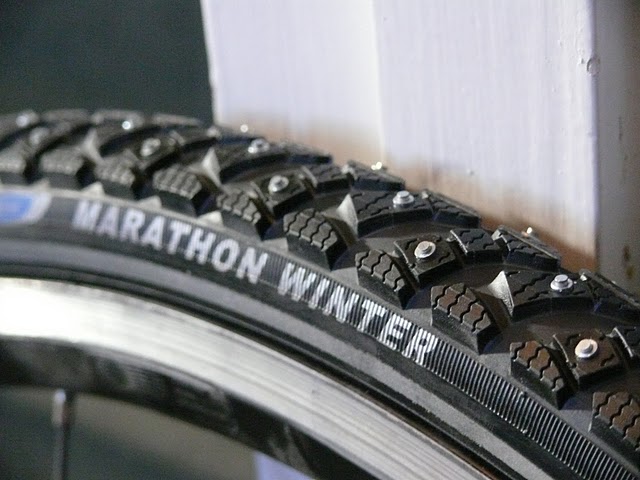
Of note, 76% of all Canadians change their all-season tires with snow tires to enjoy better traction and control. Most car owners say that these tires have saved them a possibly dangerous condition.
Outside's long reads email newsletter features our strongest writing, most ambitious reporting, and award-winning storytelling about the outdoors. Sign up today.
Nowhere does consumer perception lag further behind on-the-ground reality than in the car world. And that’s a problem, because your outdated beliefs, loyalties, and superstitions are probably costing you money and compromising your safety.
We discussed just that last year, when I told you that running winter tires matters way more than buying an all-wheel drive car. But that article had one major flaw: I neglected to explain why studded tires are so vastly inferior to the modern studless alternative. And readers have since indicated that they are actually running studded tires in conditions that don’t merit them.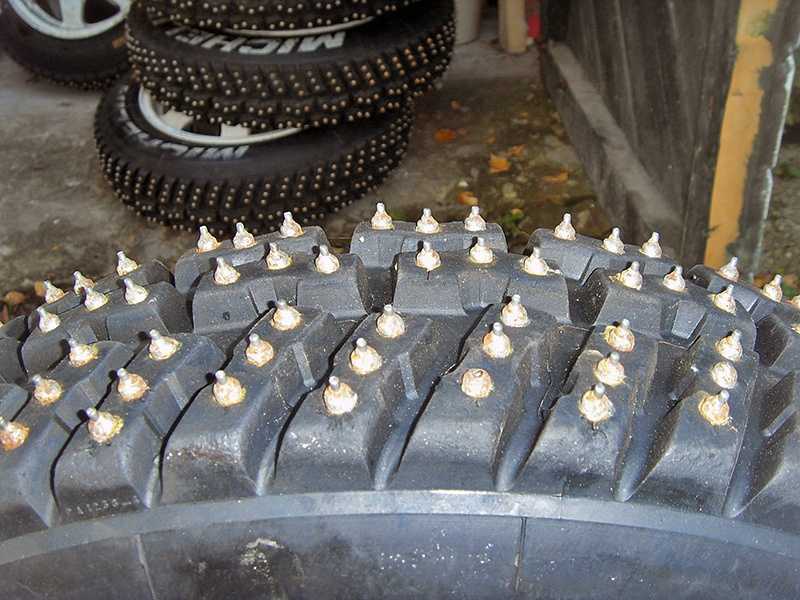 This is my attempt to fix that.
This is my attempt to fix that.
If you don’t read any further, the fact that studs only provide additional grip on clear ice is probably the most important takeaway I can give you. Studs themselves are small, sharp metal protrusions installed into the tread of a tire. Because they get between the rubber and whatever surface you’re driving across, they need to be able to poke into that surface and momentarily stick there, resisting lateral forces, in order to provide grip.
Picture other winter surfaces: in packed, loose, or deep snow, the studs will definitely penetrate, but they won’t find the resistance necessary to actually add grip. In slushy or wet conditions or on bare pavement, the tire needs to come into contact with the road surface in order to find traction—and the metal studs actually get in the way of that.
So studs help on bare ice only, do nothing for you in snow, and actually make you less safe in other conditions.
For last year's article on all-wheel-drive versus better tires, I interviewed Woody Rogers, the head of Tire Rack’s testing team. Because Tire Rack is the largest online tire retailer, Rogers tests virtually all makes and models of tires and his job is to be as objective as possible. Tire Rack doesn’t care about selling you a specific tire; they care about selling you the best tire for your needs. “Drivers can’t dictate the surfaces they drive on,” he told me. “They just need a tire that works across all the hazardous conditions they face in winter months.” And that’s not studs.
And Even on Ice, Studs Only Work at Certain TemperaturesBack in 2001, Washington State conducted an exhaustive study into the performance of studded tires. One of its most interesting conclusions was that, while studs do grip clear ice very well, they only do so under a very specific set of circumstances.”Studs are most effective on ice at or near 32 degrees F and lose their efficacy as temperatures drop and the ice becomes too hard for the studs to grip or when temperatures rise and ice melts to slush or wet pavement,” the study reads. The minimum effective temperature for studs? Zero degrees Fahrenheit, according to the study.
The minimum effective temperature for studs? Zero degrees Fahrenheit, according to the study.
And that’s a huge problem, because bare ice in those temperature ranges where studs help only exists on roadways for a very small amount of time. In Washington, the study found that conditions where studs work only exist one percent of the time. In Alaska, those conditions occurred just six percent of the time during winter months. In Connecticut, that number is just half a percent. In Ontario, bare ice between zero and 32 degrees accounts for less than two percent of vehicle miles traveled.
Go back to Rogers’s quote above, and you’ll see why having a tire that only works as advertised in such specific, rare circumstances will be problematic. I called him back up for help with this article. “There is absolutely a time and place where a studded tire is a superior solution,” he tells me. “But I don’t know a place in the U.S. where conditions merit studs all winter. So, you have to consider managing the tradeoffs. ”
”
Tiny metal spikes don’t grip pavement as well as soft, pliable rubber. So, by getting between the rubber and the road, studs actually reduce grip, and therefor safety, in slushy, wet, or dry conditions.
A study conducted in Alaska in 1994, soon after the advent of modern studless winter tires, compared the braking, acceleration, and cornering performance of studded, studless winter, and all-season tires across packed snow, clear ice, and bare pavement. Studded tires demonstrated some advantage in braking and acceleration on bare ice, were actually out-cornered by studless winter tires, and were demonstrated to reduce grip in all tests on bare pavement. Consider the small fraction of the time in which conditions merit studs and you can see that you are sacrificing grip—and, again, safety—throughout most of the winter.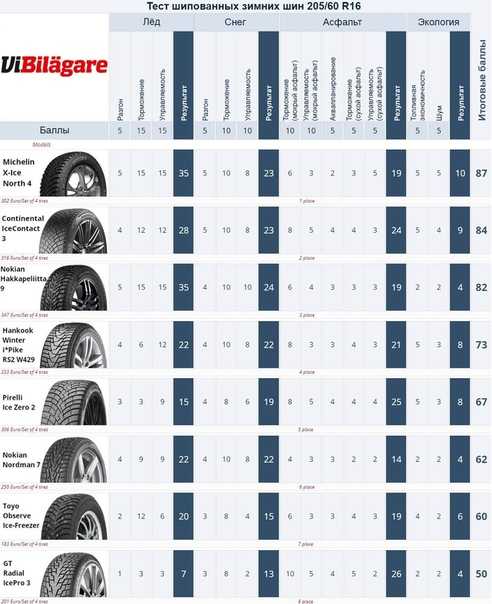
“There is absolutely a time and place where a studded tire is a superior solution. But I don’t know a place in the U.S. where conditions merit studs all winter. You have to consider the tradeoffs.”
And that's assuming your studs are in good condition. “Think about how much of your driving here in the U.S. is spent on non-snowpack roads,” says Rogers. “And that is wearing at the studs, blunting the sharpness of them, and wearing them down. That takes away some of the traction advantage.”
How much grip is lost as studs wear? “When stud protrusion diminishes to 0.024 in. (0.6 mm), the frictional effect from the studs becomes negligible,” concludes the Washington study. It found that after just 1,000 miles of driving on bare pavement, the braking distance of studded tires increased by 12 percent.
Studs aren’t the only things that wear when they’re driven on bare pavement. The road surface itself is also torn to pieces. By damaging pavement so significantly, studs actually create a significant amount of pollution, throwing microscopic asphalt and concrete particles into the air. In Japan, concerns about this type of pollution led to the development of moderns studless winter tires in the early 1990s. Studs are now banned in that (very snowy) country.
In Japan, concerns about this type of pollution led to the development of moderns studless winter tires in the early 1990s. Studs are now banned in that (very snowy) country.
“And then there’s the noise,” says Rogers. “The noise is crazy. I still remember the first time we drove on studded tires as part of a test here, I was in a caravan with other cars, and we had a studded car and a studless car. I was an eighth of a mile behind the studded car, and even with the windows up, I could here the noise from the tires of the car ahead of me.”
All that for a small advantage in one specific circumstance that only accounts for a tiny fraction of the miles you’ll log during the winter?
Stopping distances on bare ice, at different temperatures. (Washington State Transportation Center)Studs Aren’t Great to Drive OnBack in the 2000s, when it was my job to test new cars, I once crashed a Corvette into a bank of frozen snow way up in northern Sweden. Why? Well, because I’m an idiot, obviously. But part of the reason was also due to the unique handling characteristics of studded tires, which I failed to fully account for.
But part of the reason was also due to the unique handling characteristics of studded tires, which I failed to fully account for.
“With a studded tire, what we’ve found particularly during braking and acceleration, is that once the tire spins, the studs cut a groove in the ice,” says Rogers. “Then the next stud that comes along behind it comes right through that same groove and has nothing to grab onto.” It only takes about a quarter of a revolution for that effect to take place, and once it occurs, grip disappears instantly.
“That leads to what you felt in the Corvette,” Rogers tells me. “Grip, grip, grip, grip, grip, then whoops—who pulled the rug out?”
Even if you’re not lapping a car around a race track carved onto a frozen lake, this lack of communication from studded tires could impair your ability to drive safely in winter conditions. Whereas studless tires lose their grip progressively, communicating to the driver that they’re nearing the limits of available grip, studded tires lose grip suddenly, without warning.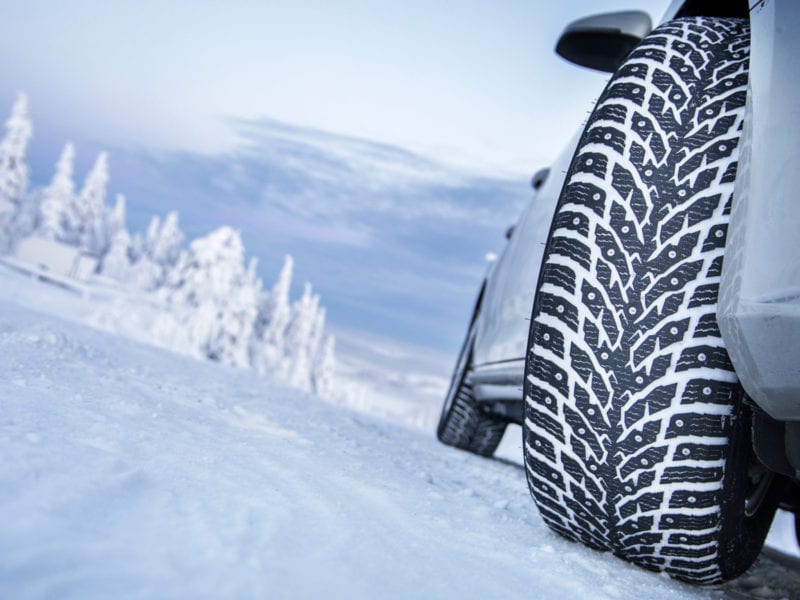 You won’t know you’re driving too fast for the conditions until you end up in a ditch.
You won’t know you’re driving too fast for the conditions until you end up in a ditch.
The simple answer is that studs are an outdated technology that's no longer relevant in the vast majority of driving conditions.
“The traction of studded tires is slightly superior to studless tires only under an ever-narrowing set of circumstances,” the Washington study concluded—way back in 2001. “With…the advent of the new studless tire, such as the Blizzak, since the early 1990s, the traction benefit for studded tires is primarily evident on clear ice near the freezing mark, a condition whose occurrence is limited. For the majority of test results reviewed for snow, and for ice at lower temperatures, studded tires performed as well as or worse than the Blizzak tire. For those conditions in which studded tires provided better traction than studless tires, the increment usually was small.”
This winter, will you drive in extreme cold? Will you drive on snow? Will you encounter bare, plowed highways? Winter driving is defined by its unpredictability. Fortunately for all of us, there is a device designed to deal with all of it: The modern studless winter tire.
Fortunately for all of us, there is a device designed to deal with all of it: The modern studless winter tire.
(
Updated:
25/01/2022
)
Article content
During operation, the winter set of tires wears out actively, loses grip, loses elasticity at low temperatures.
The studs wear off and fall out due to deformation. With such damage, manufacturers recommend changing tires to new tires in order to prevent an emergency, to prevent skidding on an unstable winter road. However, in a situation where metal cutters are damaged on new tires, it is not necessary to install a new set. It is enough to restore the studding.
Re-studding winter tires is a standard procedure used to improve the performance of tires. It improves grip on icy surfaces, improves driving safety in cold weather.
Due to the design, the studs stop working even on new tires. If the tire wear is uneven, the cutters become dull, stop grabbing on an icy road, or become higher than the tread. This leads to the fact that they are pulled out during sudden braking or wheel slip. In this case, a new kit is not needed, since it makes sense to stud.
This process can be done by hand or with a tool. Before re-completing, it must be taken into account that the installation of spikes should be carried out 2-3 months before the onset of the winter period. The process is influenced by technology, the rubber must be dried before operation, after which a mandatory run-in must be carried out. Only if the conditions are met, you can get the desired effect - the spikes do not deform and do not fly out.
Before re-completing, it must be taken into account that the installation of spikes should be carried out 2-3 months before the onset of the winter period. The process is influenced by technology, the rubber must be dried before operation, after which a mandatory run-in must be carried out. Only if the conditions are met, you can get the desired effect - the spikes do not deform and do not fly out.
Studding winter tires can be done in several ways. There is an initial and repair (repeated) method. The initial technology involves the operation of non-studded tires, which can be equipped at any time if necessary. Re-studding is a do-it-yourself procedure for installing new incisors to replace the lost ones. Self-installation increases the working life of the wheels, improves safety.
Despite the advantages of the method, there are restrictions that prohibit the repair of worn tires. If they are ignored, this will lead to poor-quality re-recovery and will not give a result.
Mounting studs on a winter tire is done in cases where:
Do-it-yourself reassembly of cutters is not allowed if:
Before making repairs, decide if you need additional studding or if it is better to replace the set of wheels.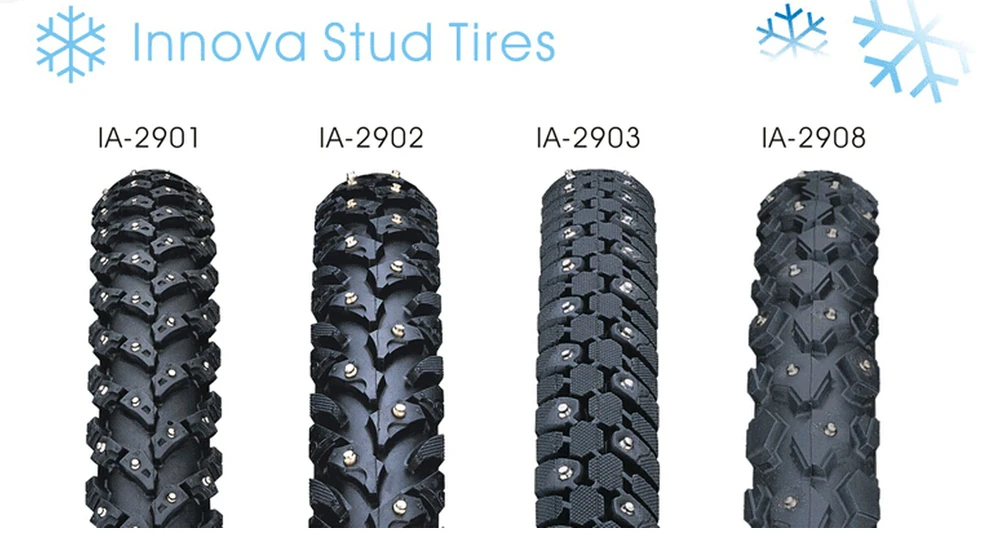 Only having determined the relevance, one should start work and re-install the metal elements.
Only having determined the relevance, one should start work and re-install the metal elements.
Winter Drive protection
Tires Goodyear UltraGrip Arctic 2 SUV
Winter Drive protection
Rating:
4.5
Tires Goodyear UltraGrip 600
Winter Drive Protection Sound Comfort
Rating:
4.5
Tires Goodyear UltraGrip Ice Arctic
Winter Drive protection
Tires Goodyear UltraGrip Arctic 2
Winter Drive Protection Sound Comfort
Rating:
4. 5
5
Tires Goodyear UltraGrip Ice Arctic SUV
Winter
Rating:
4
Tires Goodyear Cargo UltraGrip 2
There are several ways to reposition the incisors. Repair is done with a tool or with your own hands. In the first case, studding is used with an air gun, which pushes the edges of the winter tire at the desired angle. In the second case, the tire is equipped with conventional spikes, installed with a screwdriver and a hammer. The first method of re-studding is correct and guarantees the result. It involves the preparation of tires, cleaning the tread from contamination with compressed air. This avoids the distortion of metal elements, their rapid loss.
This avoids the distortion of metal elements, their rapid loss.
It is possible to repair a winter tire in several stages, it is enough:
Installing metal cutters instead of worn ones improves the car's handling on the road, grip on slippery surfaces, and reduces the braking distance.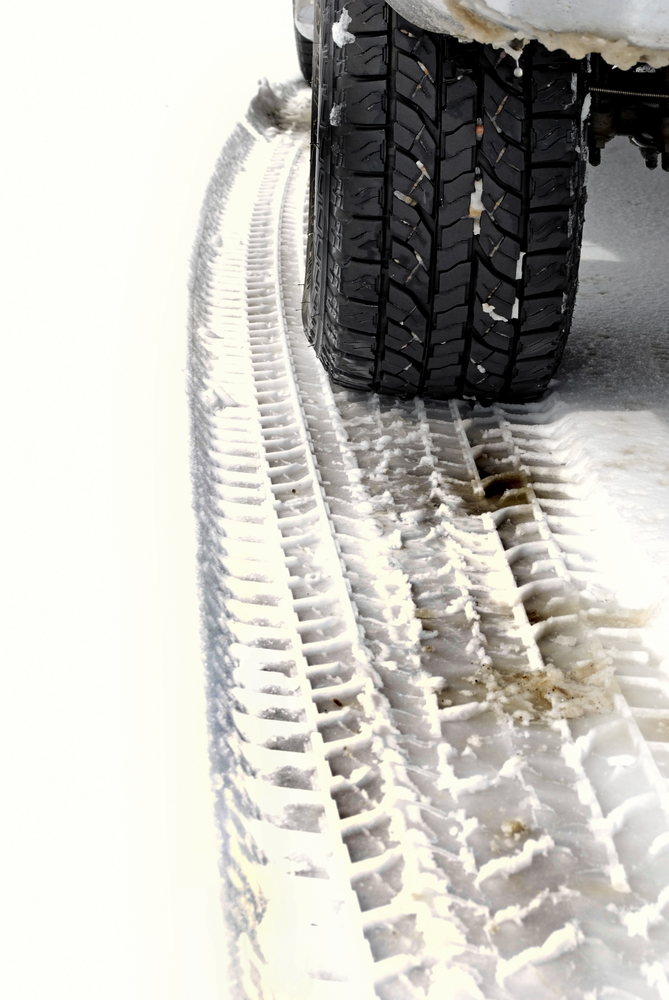 New spikes prevent skidding on the car, reduce the likelihood of slipping when accelerating. Restoration of worn tires ensures safety on the road.
New spikes prevent skidding on the car, reduce the likelihood of slipping when accelerating. Restoration of worn tires ensures safety on the road.
However, the method has weaknesses. Due to the installation of metal cutters, noise from the wheels increases, vibration increases when driving on asphalt and other hard surfaces. The disadvantages completely repeat the disadvantages of any winter kits, which are inferior in smoothness and noiselessness to summer tires. Despite the shortcomings, the tire has more positive aspects and is recommended by manufacturers to increase the life of the wheels.
Find Goodyear tires for your car
What should a driver do if there are virtually no studs left on winter tires, but they are not old at all, and the mileage is low? Is it possible to find a way out? He is. In this case, you can perform the installation of repair spikes. More on this later in the article.
In this case, you can perform the installation of repair spikes. More on this later in the article.
Contents
As the name implies, studded tires are tires equipped with spikes that prevent the vehicle from slipping, making snow and ice grip as effective as possible. Perhaps this is the most reliable type of winter tires, despite all their shortcomings: such tires make a lot of noise, the car steers worse, the braking distance increases on snow-covered asphalt, and the spikes themselves become dull rather quickly. However, in snow and ice conditions, even budget studded tires will perform much better than the most expensive regular winter tires.
A reasonable question arises: “Why not stud tires immediately during manufacture, if this only makes them better?” This is due to the fact that in some European countries where the climate is temperate and warm, legislation prohibits the installation of studded tires on cars, as they destroy asphalt. Therefore, motorists are offered another option - the installation of spikes on winter tires will be performed only at their request. Rubber can be used with or without studs, depending on rider preference and weather conditions.
Therefore, motorists are offered another option - the installation of spikes on winter tires will be performed only at their request. Rubber can be used with or without studs, depending on rider preference and weather conditions.
Of course you can. Do-it-yourself tire studding is not as laborious as it might seem at first glance. The motorist only needs to be careful and follow the work plan and certain requirements exactly.
Today, there are five types of rubber studs, which have different shapes.
The main advantage of these studs is that they have many edges, which provide good grip on icy road sections. However, diamond spikes are short-lived and, after wear, turn into oval metal balls.
These studs have sharp edges that provide good penetration into the ice surface, so that the vehicle holds the road well on the ice. Another positive point of the tetrahedral spike is its seat. Unlike oval and round spikes, their landing site is much more reliable, and their location is more correctly thought out.
Another positive point of the tetrahedral spike is its seat. Unlike oval and round spikes, their landing site is much more reliable, and their location is more correctly thought out.
The most popular accessories for winter tires. All budget tires are equipped with just such spikes.
In fact, oval pimples are the next step in the evolution of round pimples. Their main advantage is the increased contact area with the road surface, compared to other spikes. They have a lower noise level, and their transverse arrangement gives excellent grip on ice. These spikes are usually equipped with tires of high and medium price ranges. It happens that rubber has a combined combination of spikes, for example, round and oval. In this case, the price of rubber increases slightly.
This type of spikes is actually identical in structure to the usual factory ones. However, they do have differences. The repair spike is thicker than the regular one. This is done on purpose so that the spike does not fly out of the loose and broken socket. The body is made of polymers or metal.
The repair spike is thicker than the regular one. This is done on purpose so that the spike does not fly out of the loose and broken socket. The body is made of polymers or metal.
The metal core is slightly recessed into the body and is slightly lower than the factory standard cleat. This is done so that the spike sits firmly in the tire and does not stick out. This is done taking into account tire wear. Studding car tires with repair spikes ensures their firm rooting in rubber. Most of the spikes remain in place until the end of operation.
For self-studded rubber you will need:
Work order:
